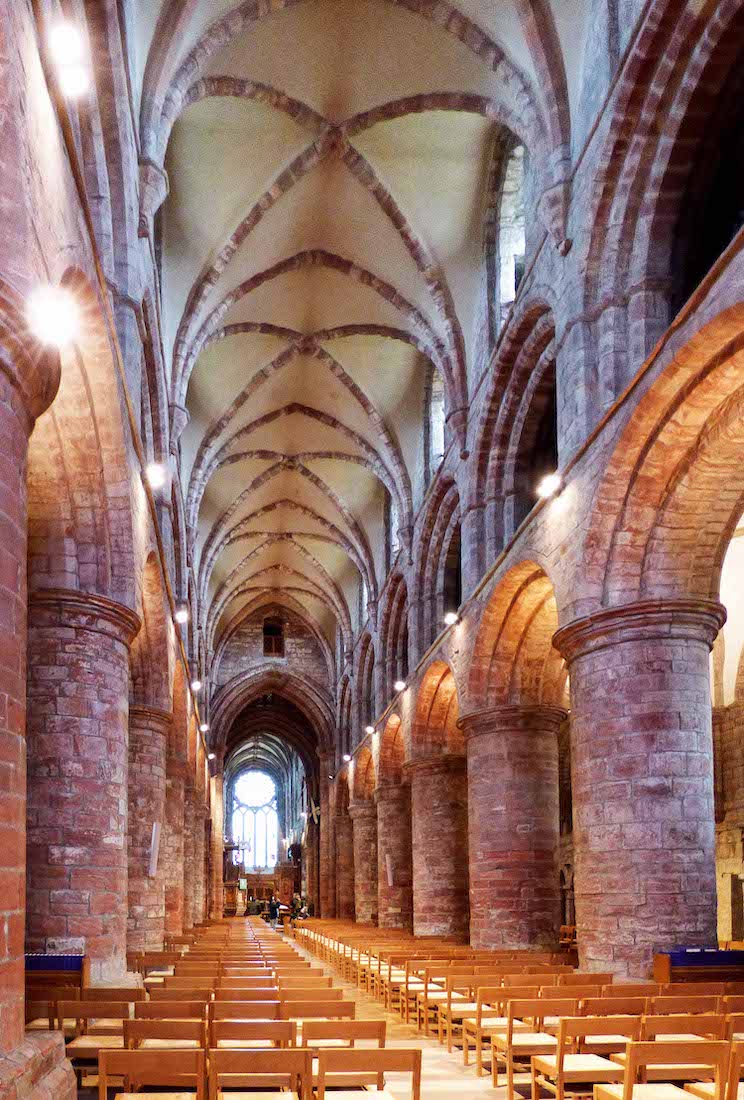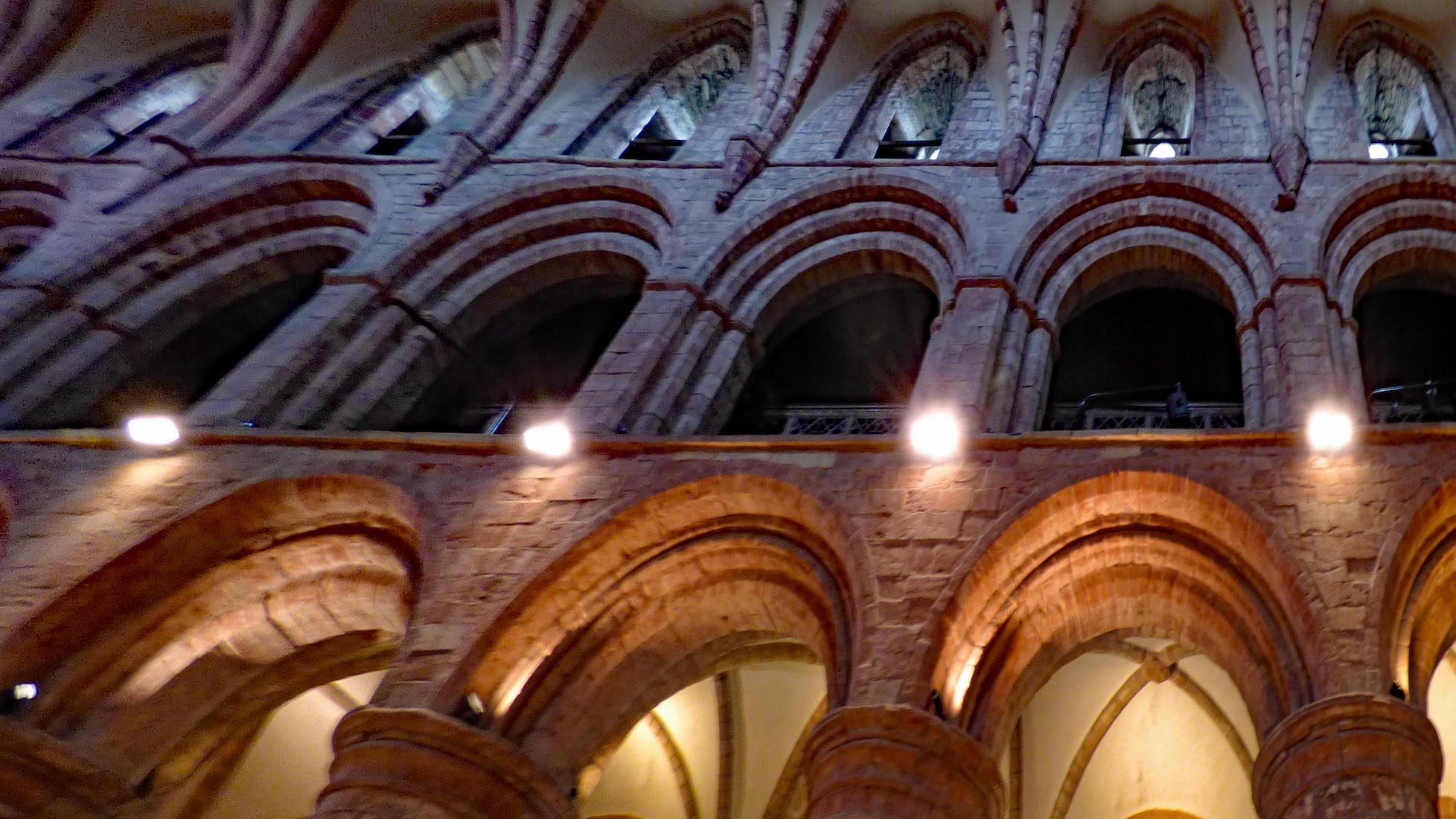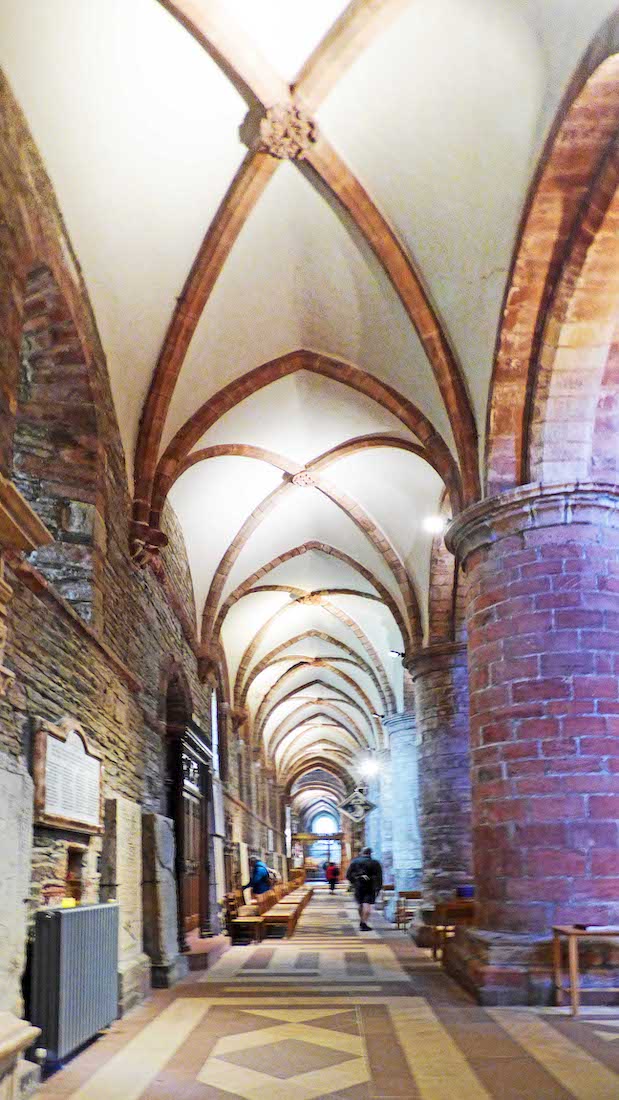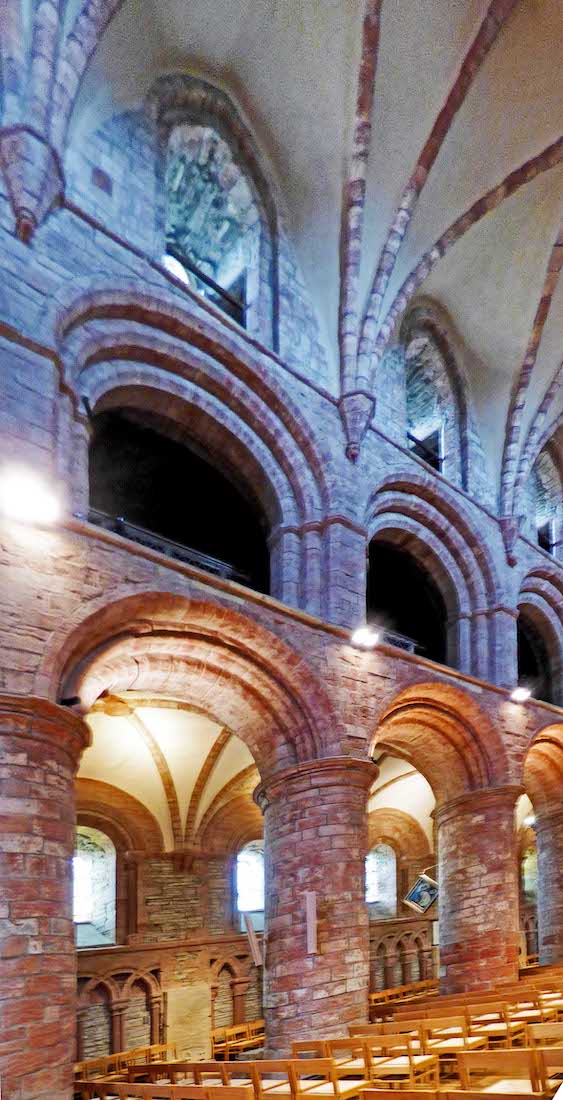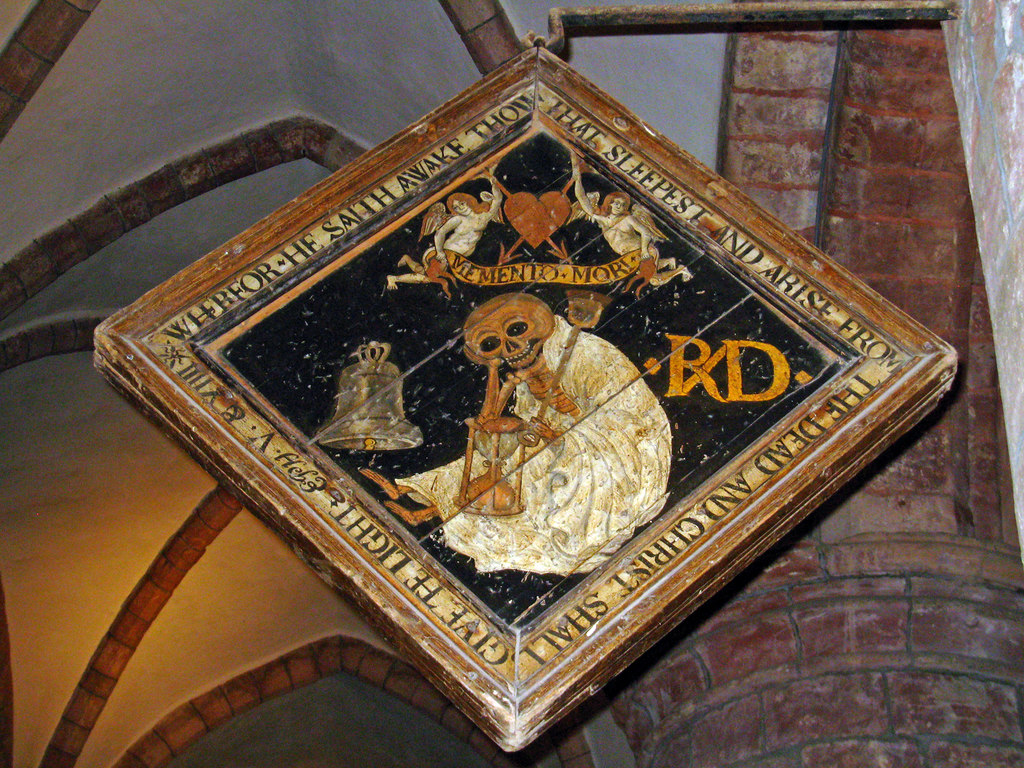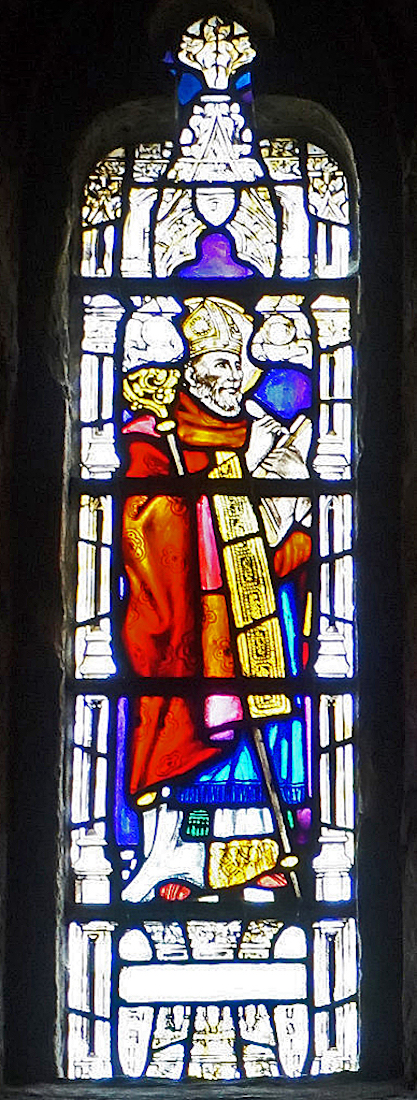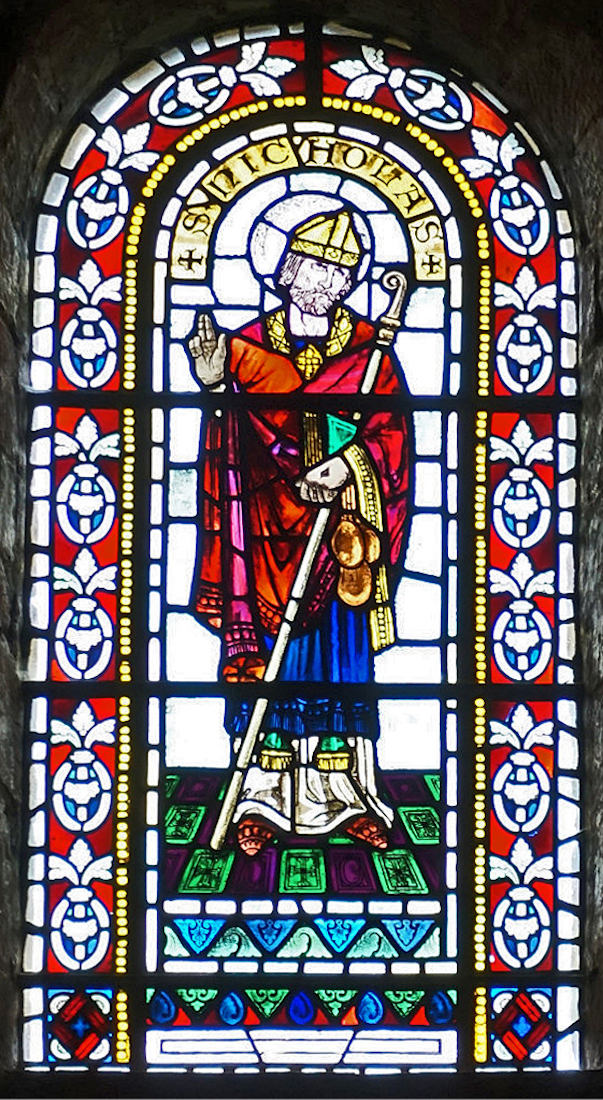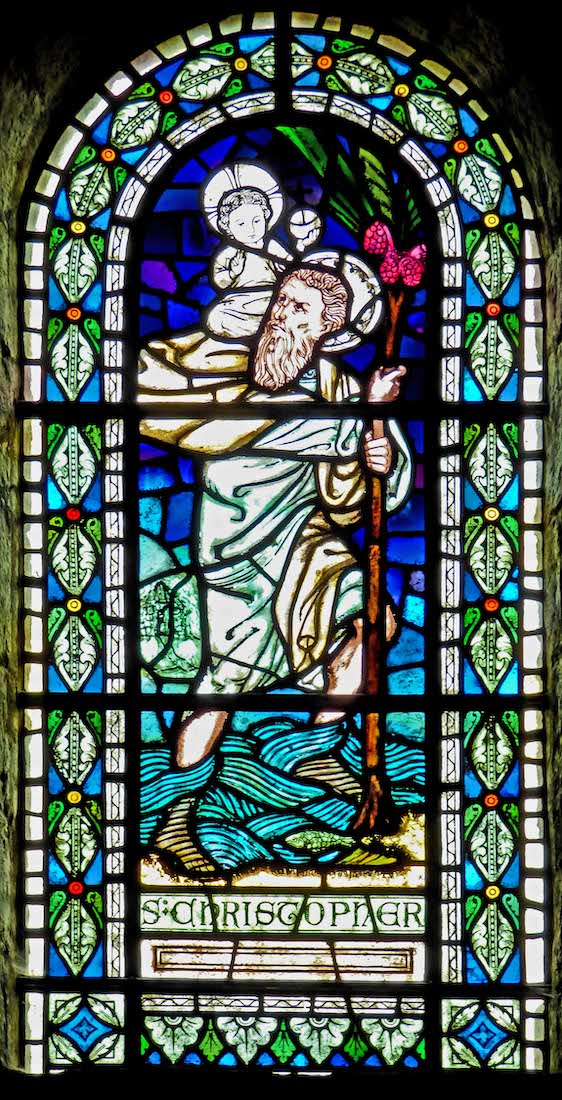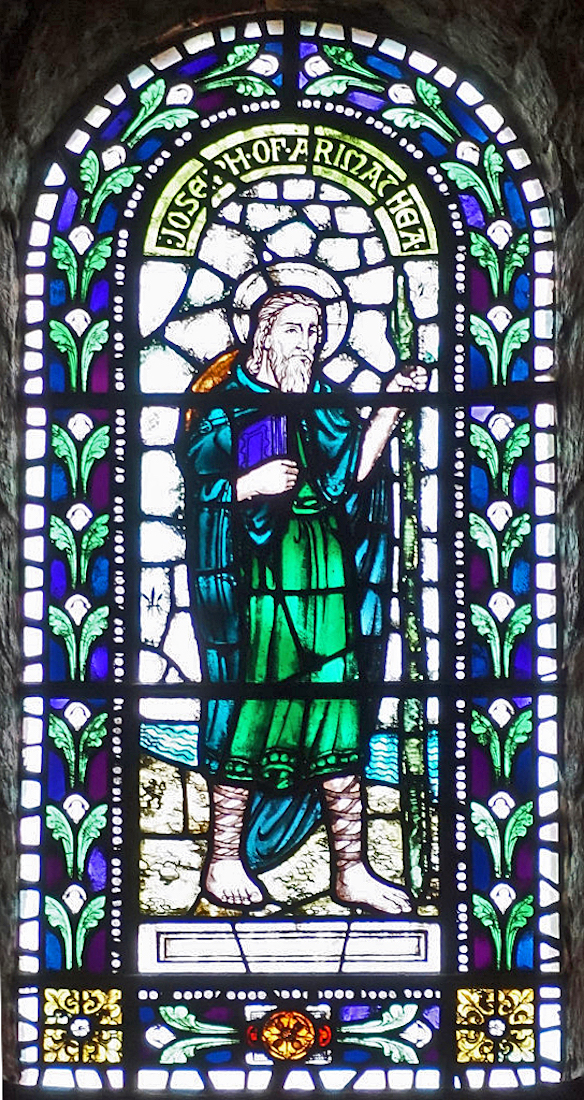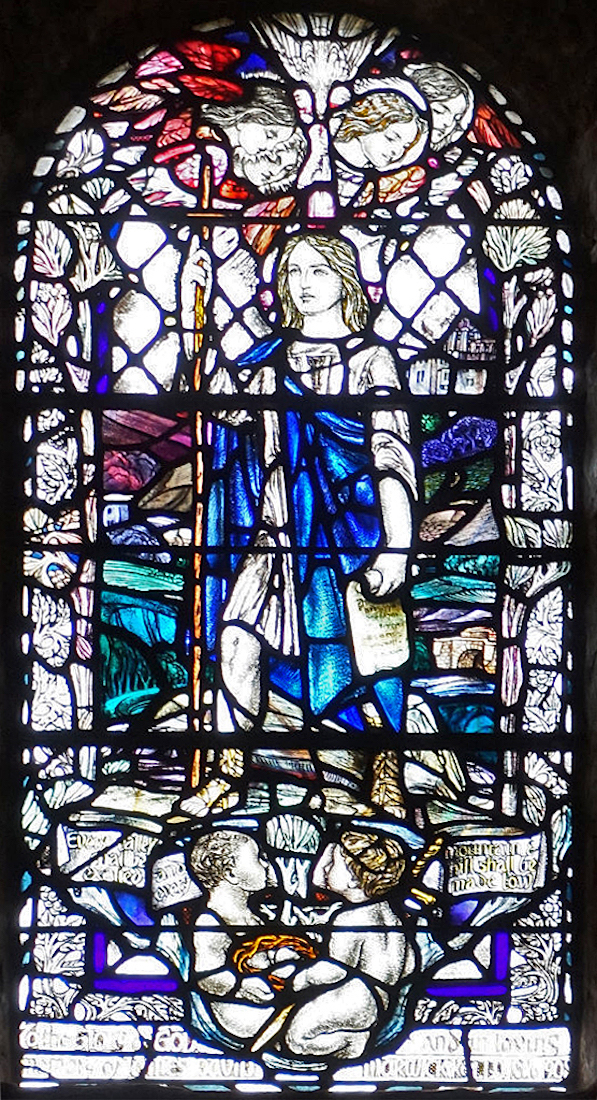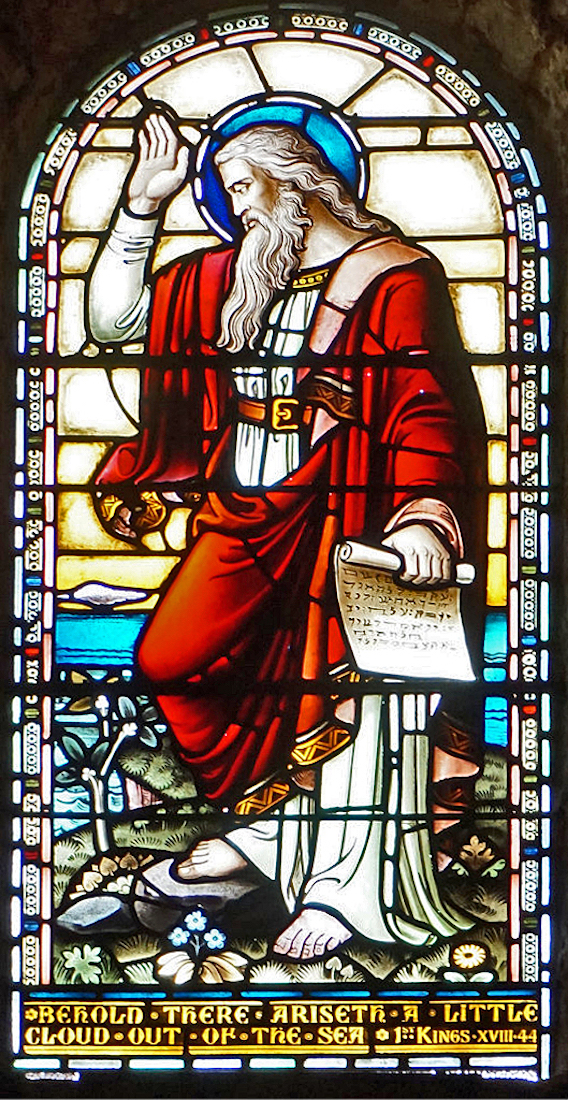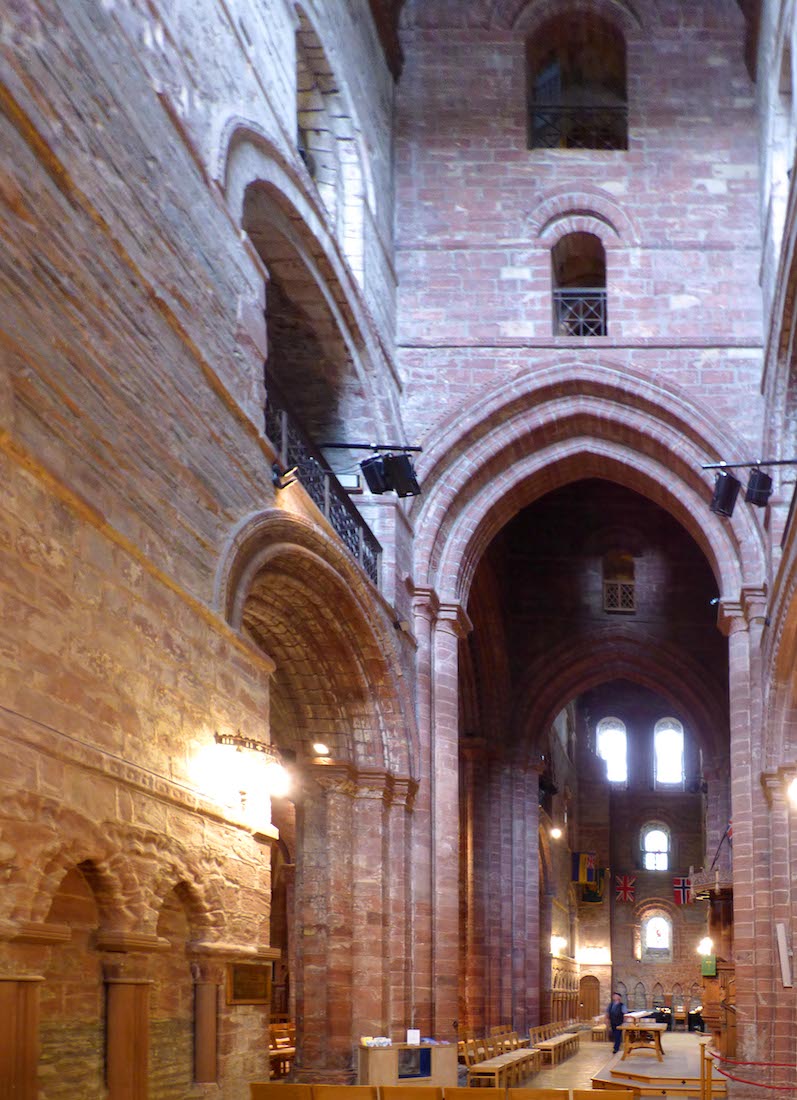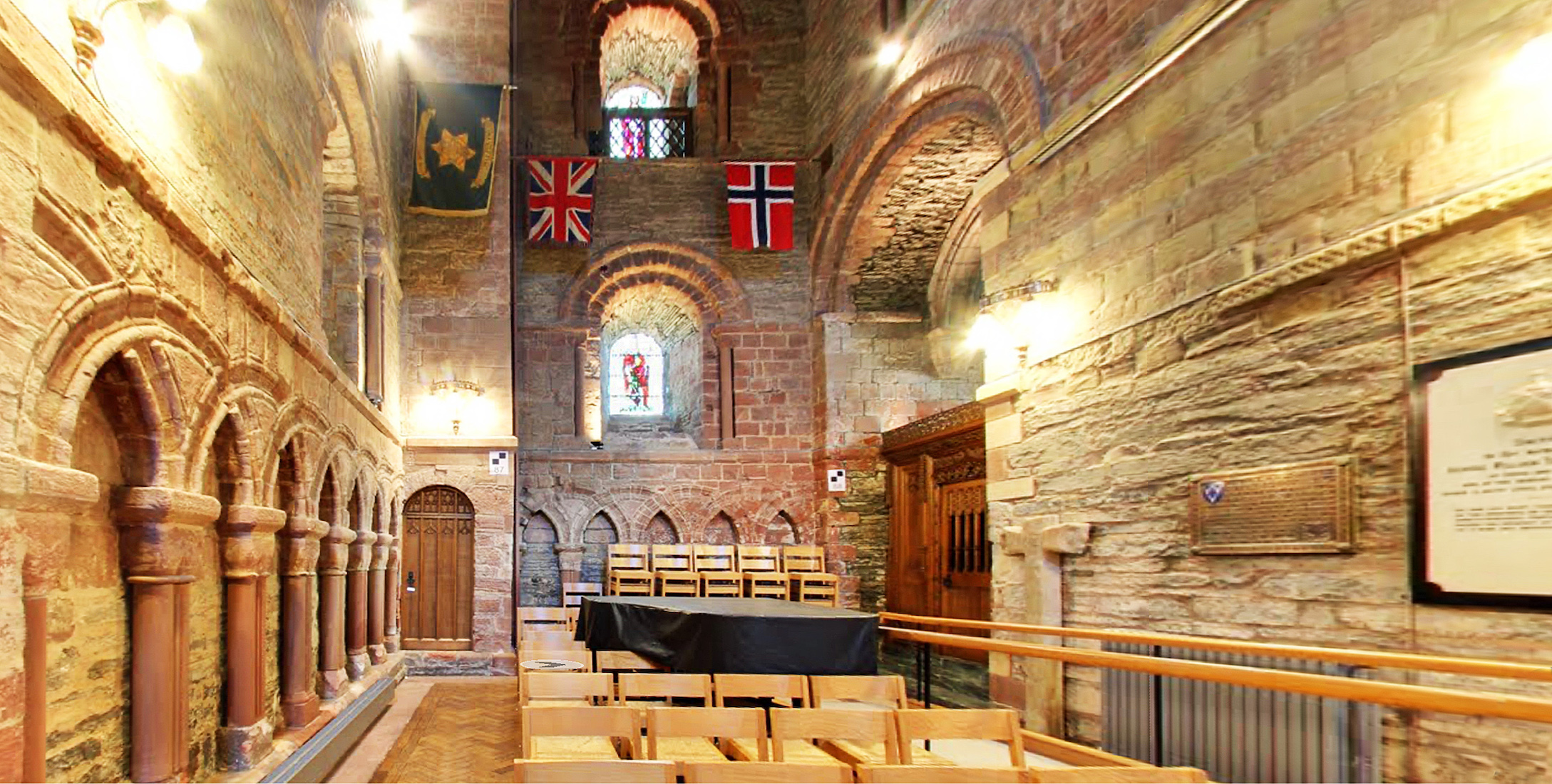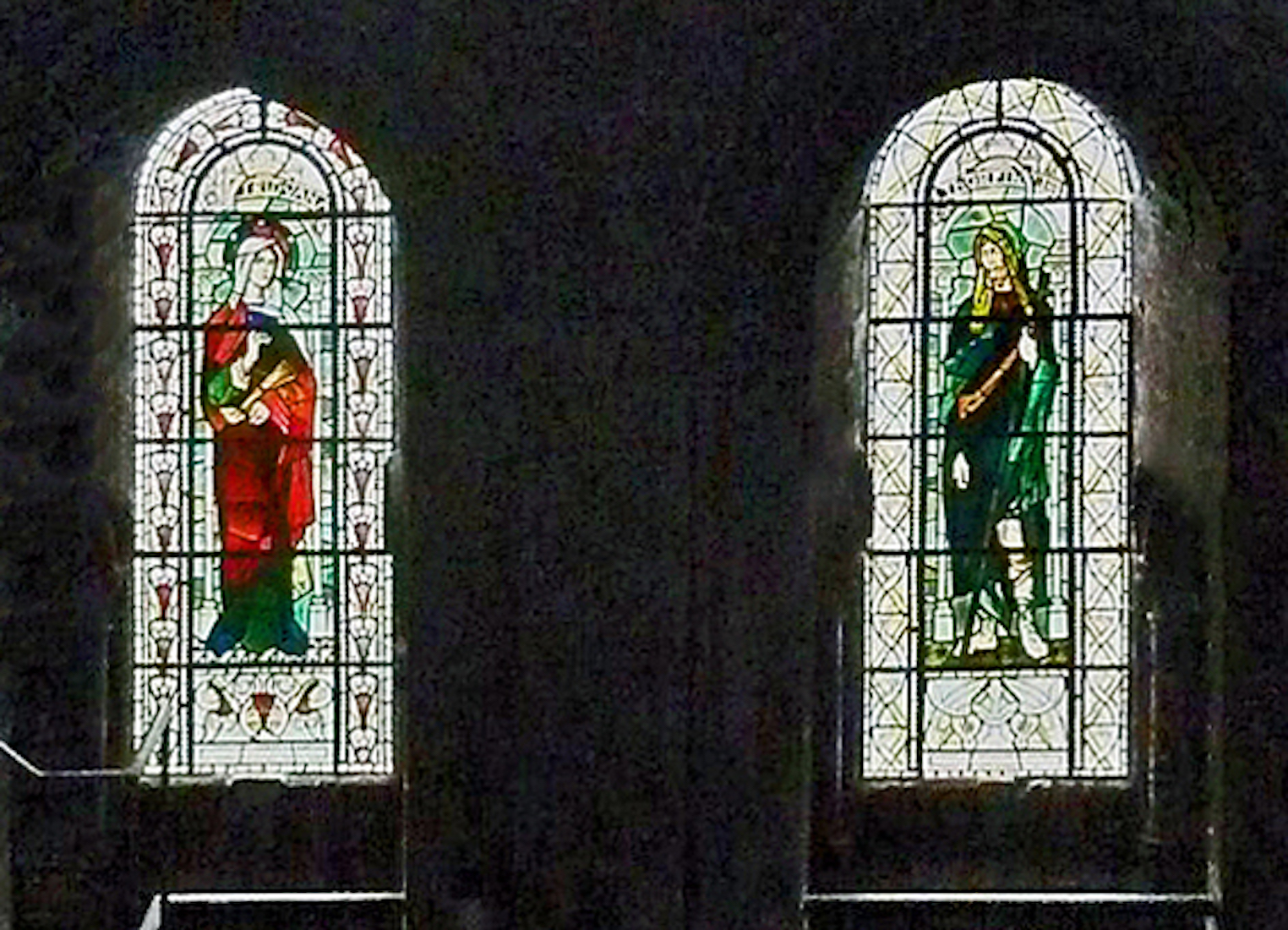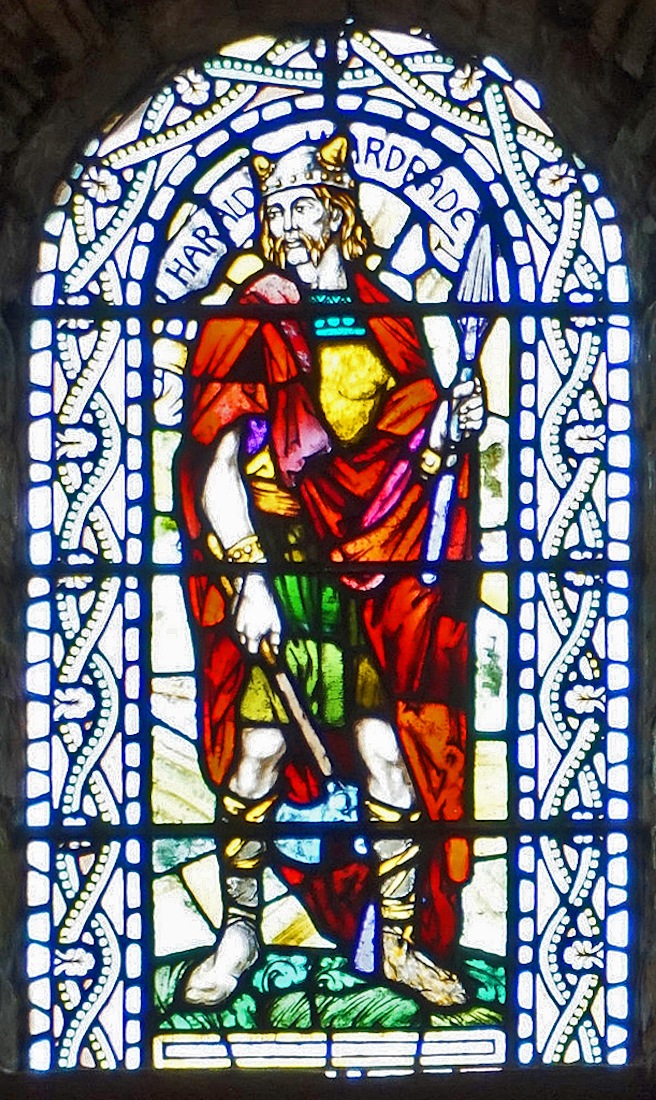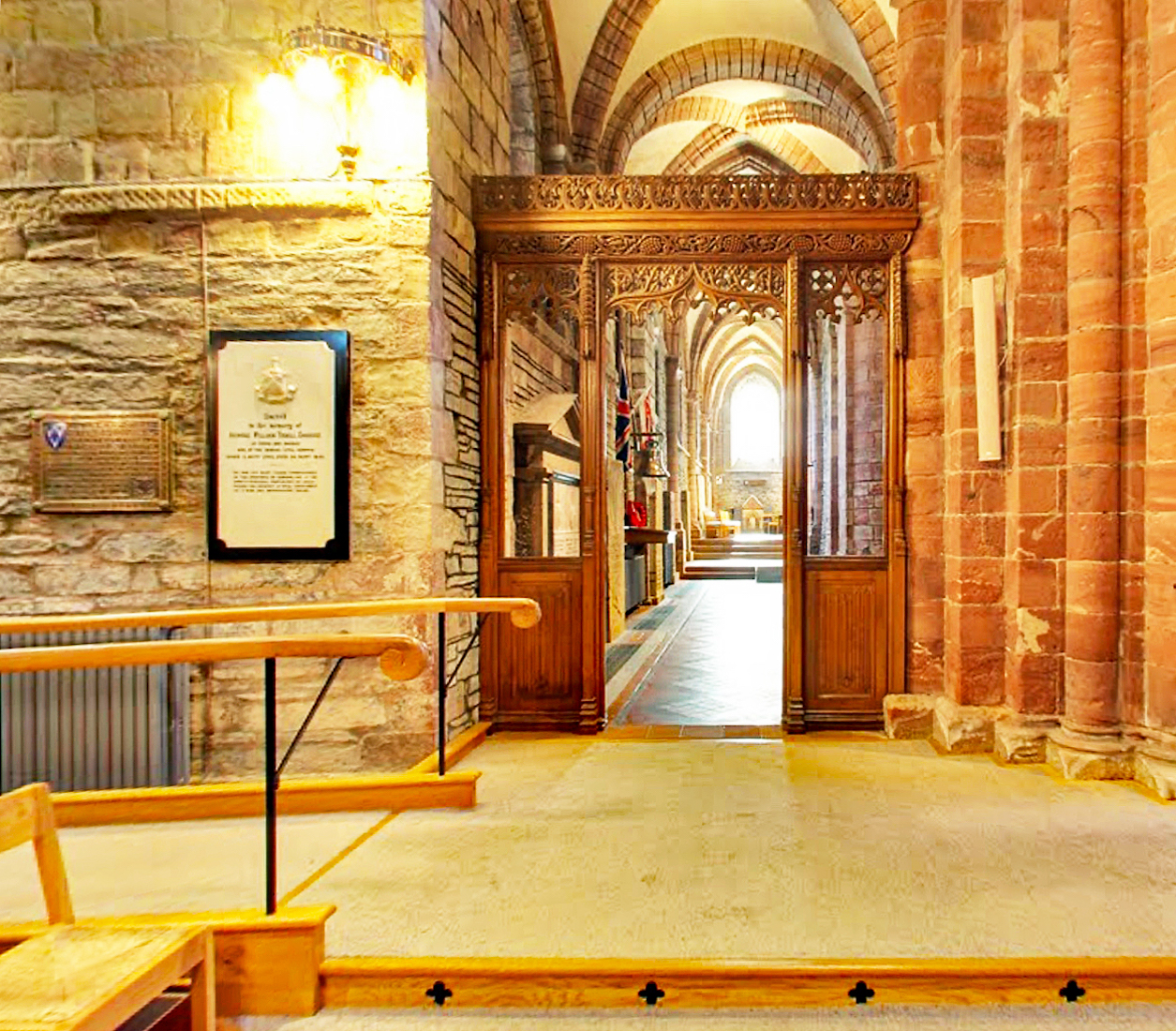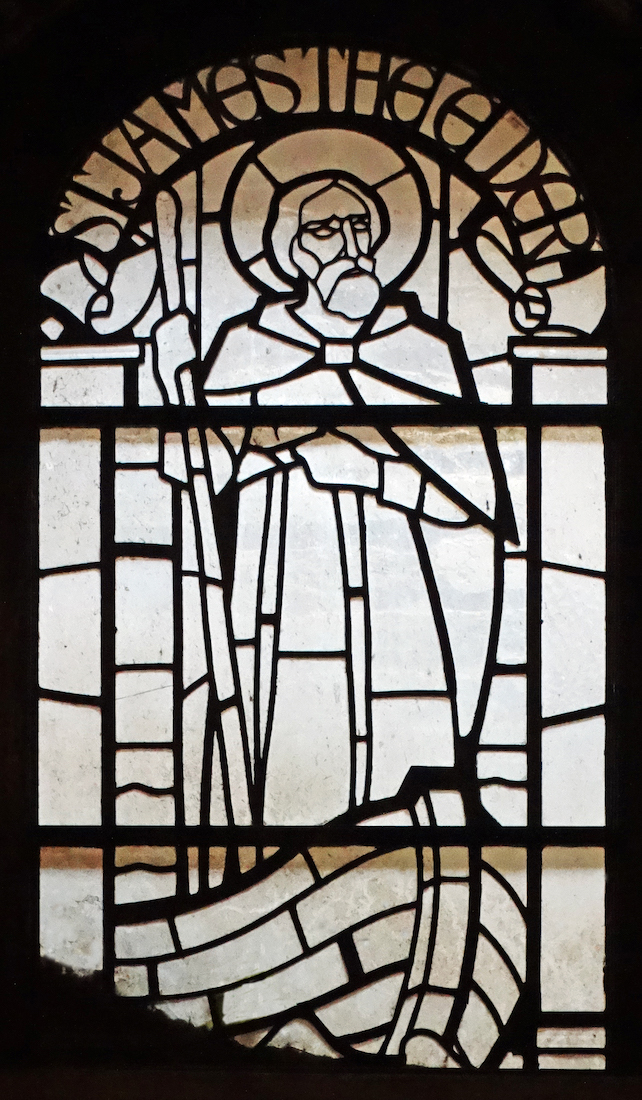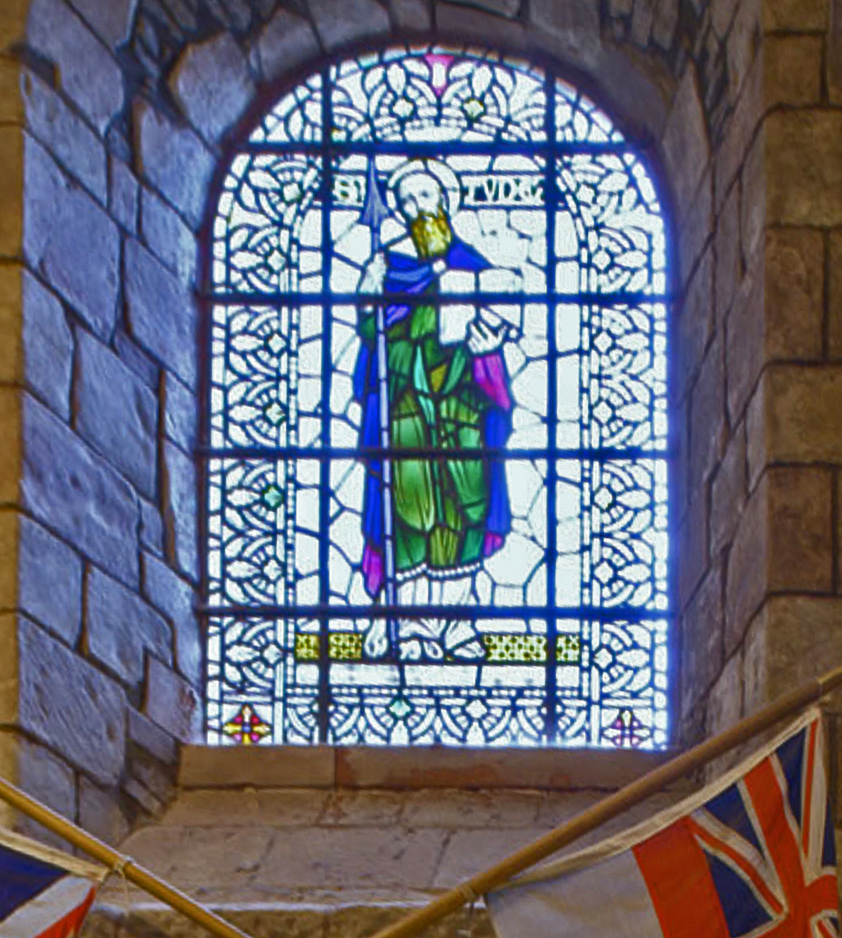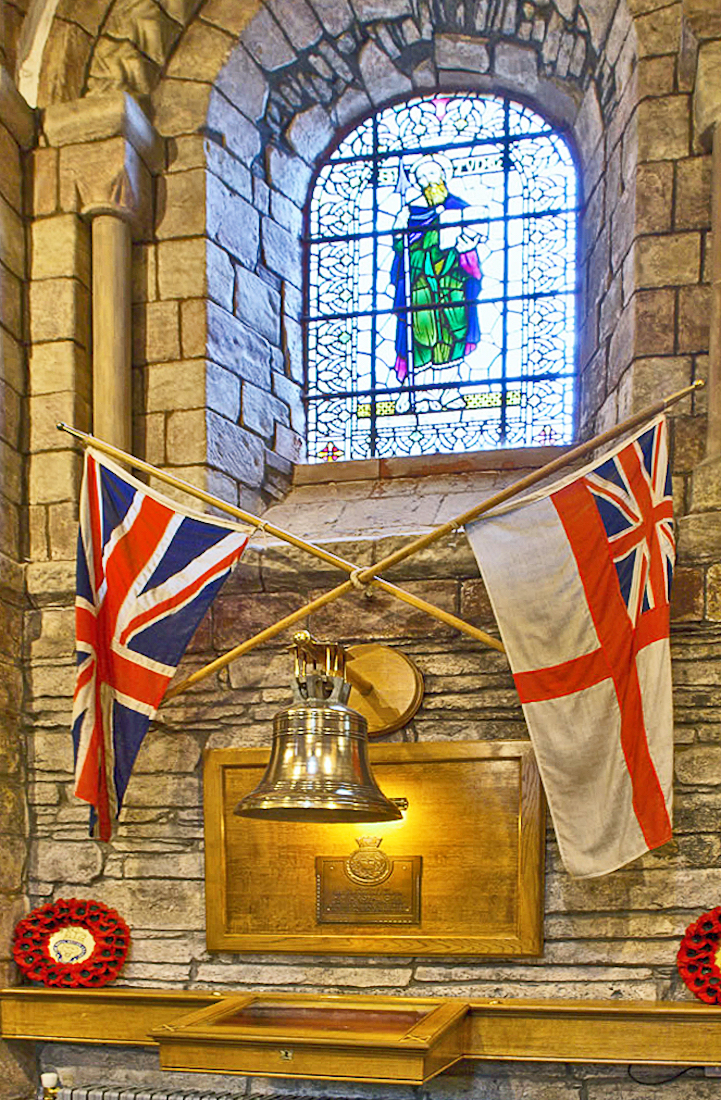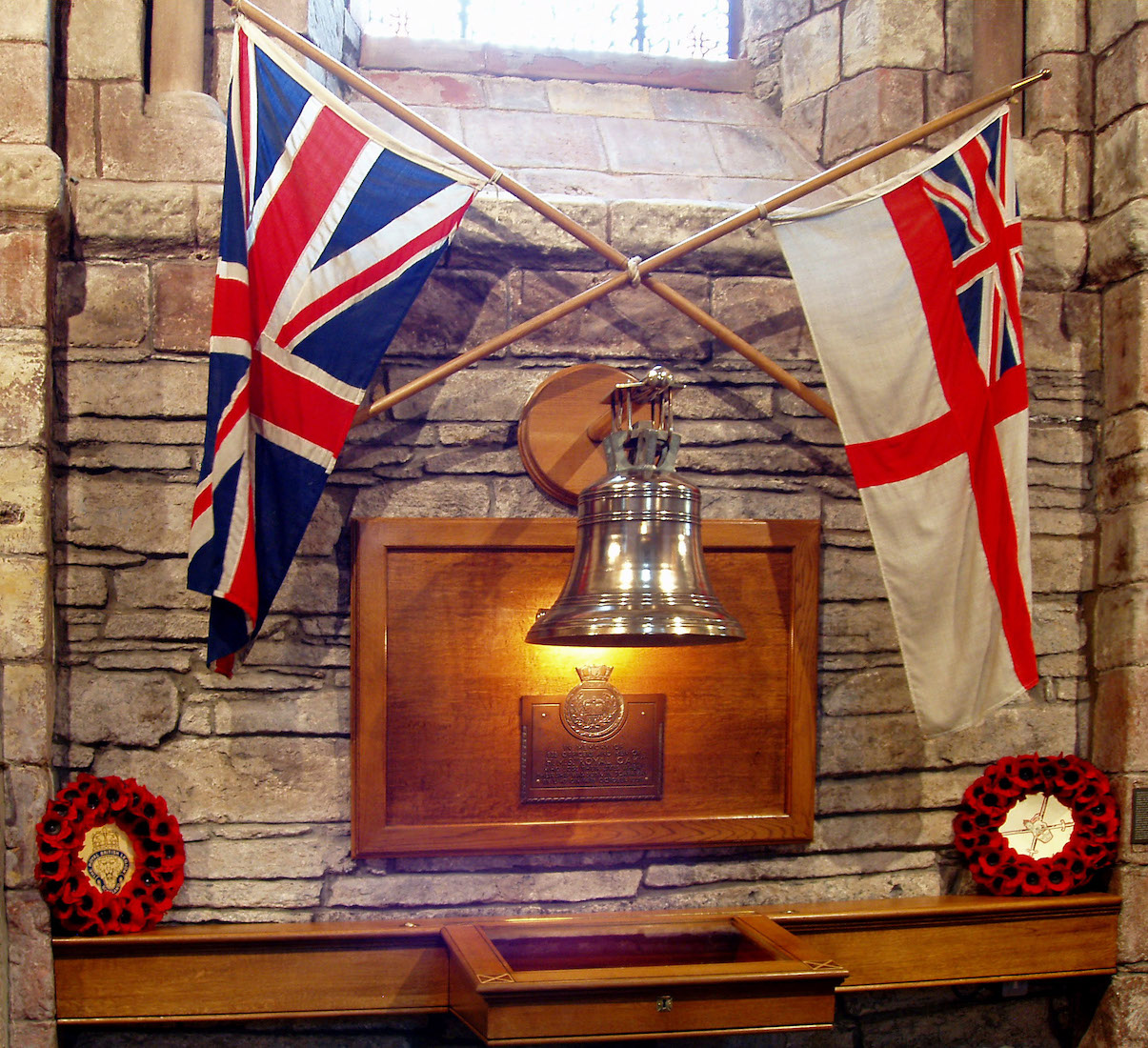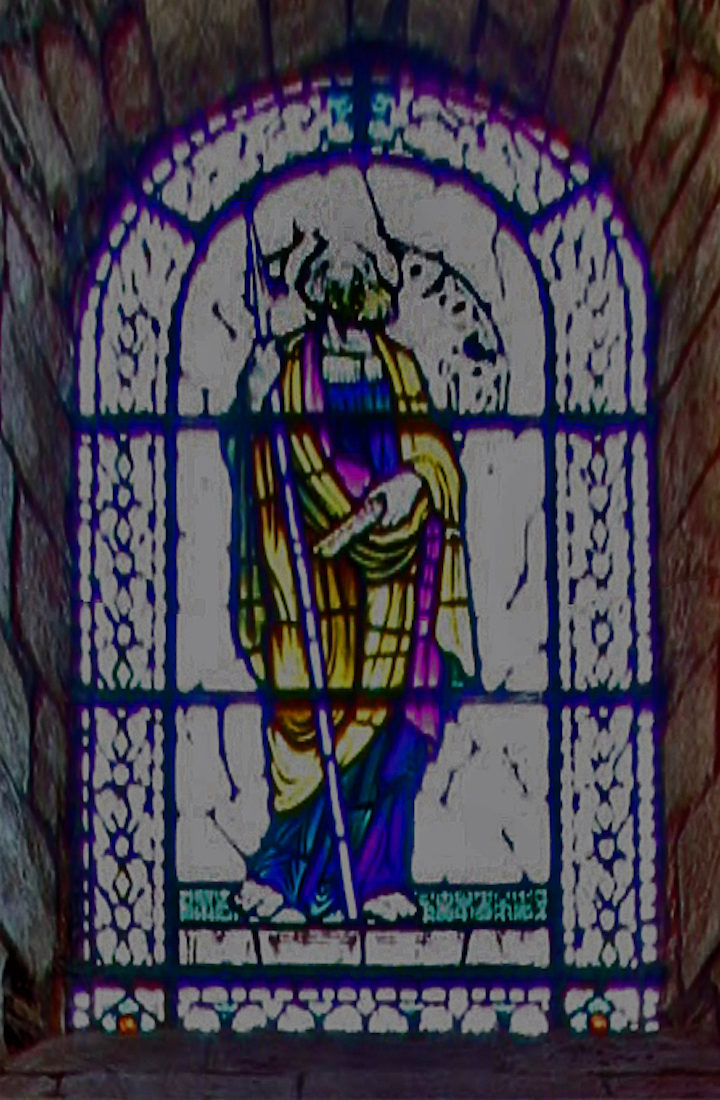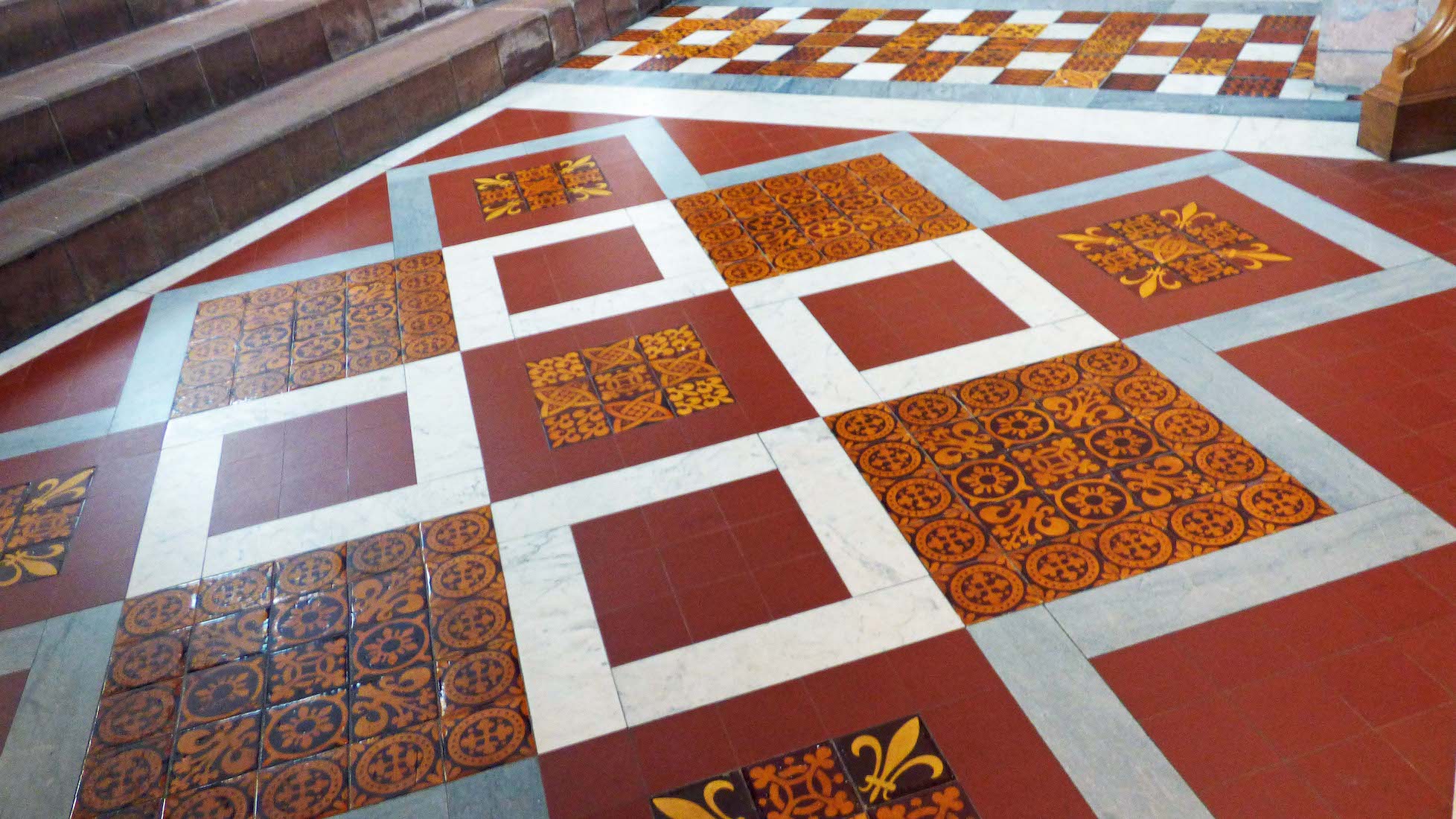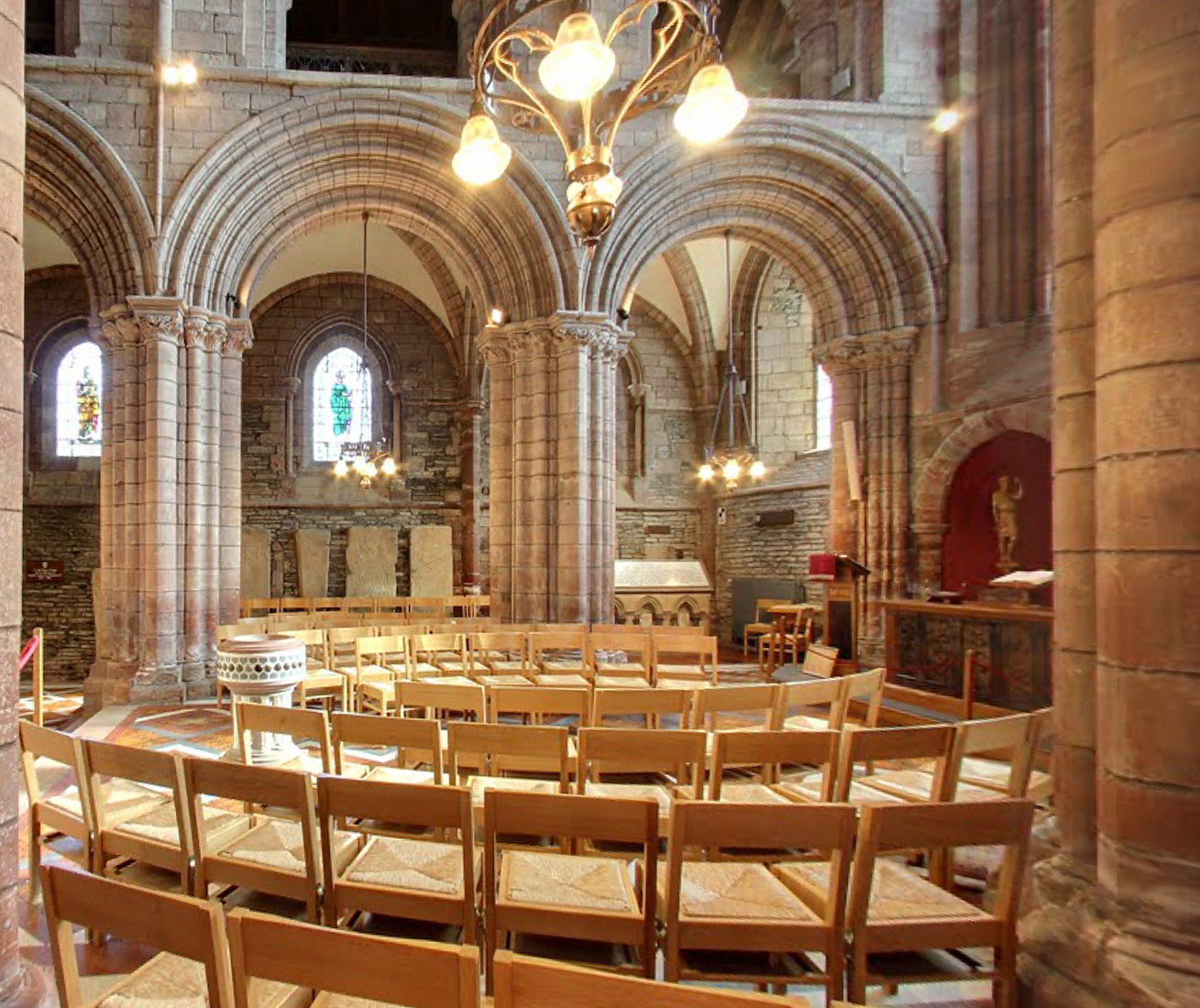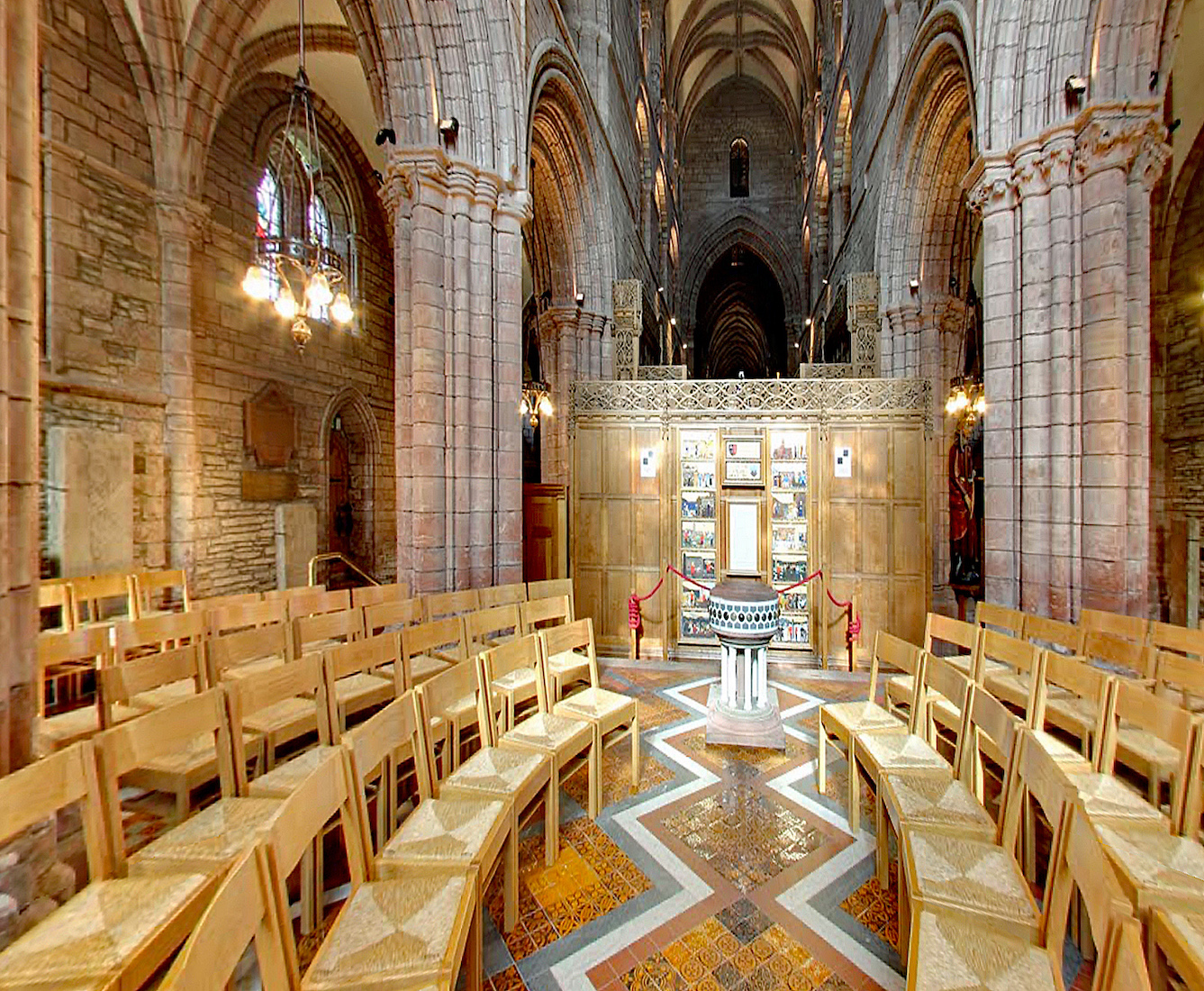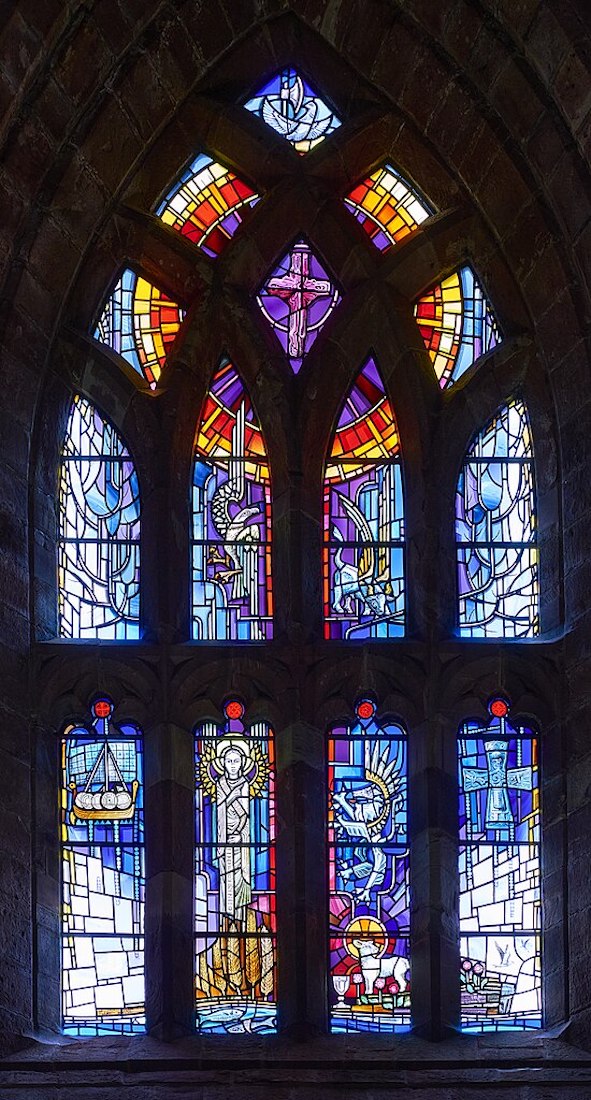
The West window was installed in 1987, to mark the 850th anniversary of the cathedral’s foundation in 1137. The artist chosen to create the window was Crear McCartney from Lanarkshire. There is much symbolism in this window. Across the bottom, the Orkney cliffs, fish and grain.the Agnus dei representing Christ. Above the cliffs are a Viking longboat and a Norwegian cross. The symbols of the Four Evangelists fill the ventre of the window. At top is the sun representing God, the St Magnus cross, and at the apex a dove, and a sword – symbol of Magnus’s death. [Photo Credit: Wikimedia Virtual-Piano] INDEX
22. FONT GSV
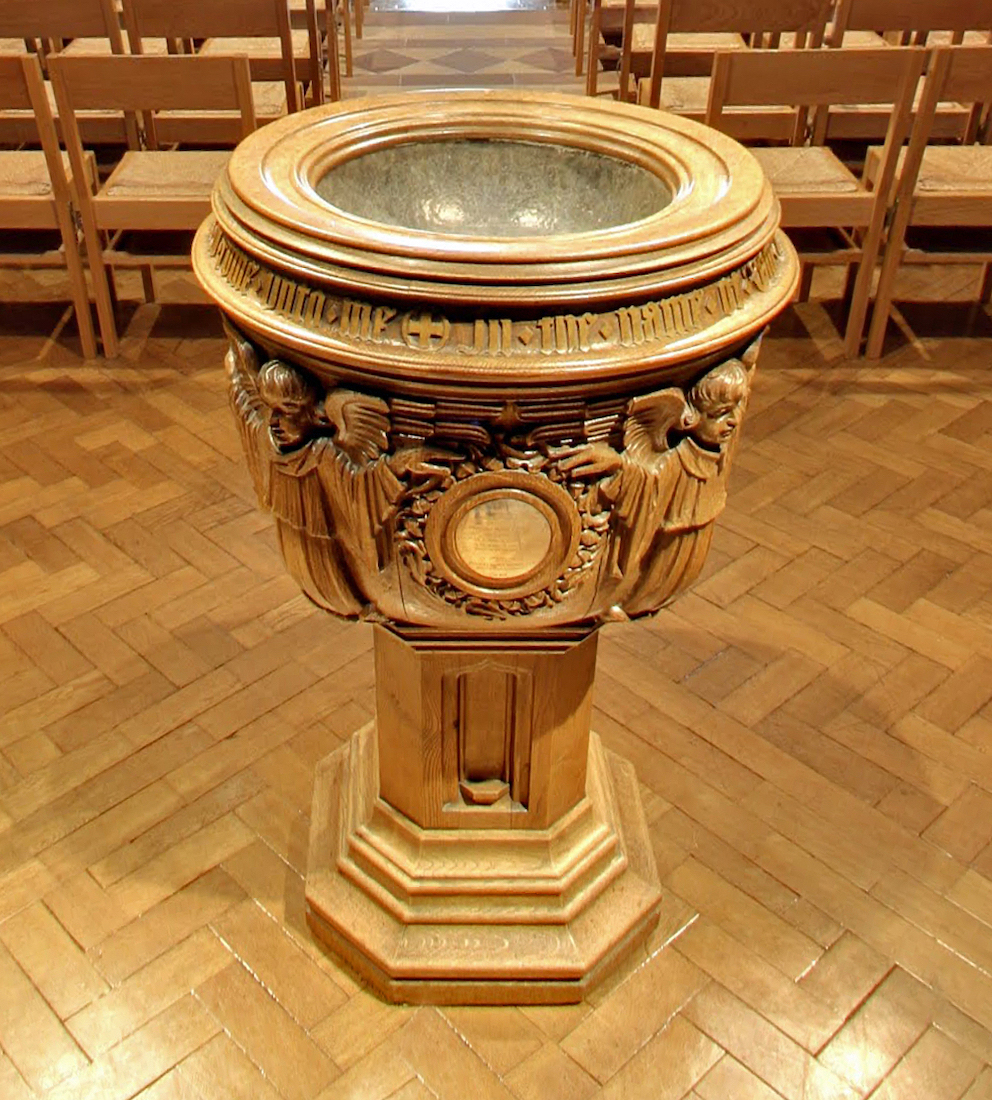
The attractive baptismal font is octagonal with angels looking out from the diagonal sides. Around the rim is the text: ‘Suffer little children to come unto me, in the name of the Father, Son and Holy Ghost’.
23. NAVE DE
We turn and look down the nave towards the altar. The reddish columns and honey coloured seating give a sense of warmth to this space. But it is the enormous solid columns which make the impression: this Cathedral has been standing for many years – perhaps it will stand forever!
24. NAVE ROOF AND ARCADES DE DE
The triforium and nave vaulting of St Magnus are excellent examples of Romanesque and early Gothic style. Only two mediaeval cathedrals in Scotland had high vaulted ceilings: they were St Andrews and St Magnus Cathedrals.
25. ACROSS TO THE NORTH WALL GSV
We move across to the North wall.
26. NORTH AISLE DE DE
Near to us along this wall are some stone tablets – two of many. Further along the aisle, the wall is lined with a simple blind arcade. However, there are stained glass windows all along this aisle – seven in total. The window openings show the thickness of the wall. •• The diagonally hanging board known as a Mort Brod, dates from the 17th century at which time the nave and transepts were used for burials. It is a wooden board (brod) with a representation of death (mort). In this case Death is shown as a shrouded skeleton holding an hour glass and a grave digger’s spade, both symbols of mortality. On the opposite side of the brod there is a rhyming inscription dedicated to Robert Nicolson. The inscription explains that his body lies beneath the board and that he left behind a wife. The brod also carries angels piercing a heart with darts of death, and the Latin warning Memento Mori, which translates as ‘Remember you will die’.
27. NORTH NAVE WINDOWS I DE IS IS DE
Here are the first four windows, shown from West to East. We notice the variations in style. From left: •• St Francis of Assisi (spelling!); •• Unknown bishop; •• St Nicholas of Myra (270 –343), early Christian bishop, role model of Santa Claus (Saint Nick); •• St Christopher, patron saint of travellers. His most famous legend tells that he carried a child, who was unknown to him, across a river before the child revealed himself as Christ.
28. NORTH NAVE WINDOWS II IS IS IS
There are three further windows along this wall. From left: •• Joseph of Arimathea, the man who assumed responsibility for the burial of Jesus after his crucifixion. •• Unknown; •• Elijah, and the story of the little white cloud (I Kings 18:44).
30. NORTH TRANSEPT GSV
The transept is very narrow, and we notice the doorway, far right, which appears to lead to some private space – perhaps a vestry. There are blind arcades along the West and North walls, and in the corner at left is a doorway leading to a steep flight of stairs. This gives access to the tower with the three bells mentioned earlier. The two flags on the far wall are the Union Jack and the flag of Norway. We check out some of the windows ...
31. NORTH TRANSEPT, NORTH WINDOWS RF IS
At top are shown the very upper-most windows in the North transept. Content unknown. [Photo Credit: Rob Farrow, Geograph] •• The window below shows Harald Hardråde, King of Norway. Harald expanded Norway’s colonial possessions in the Orkney Islands, and was succeeded by his son Magnus (1048 – 1069). [Photo1 Credit: Geograph Rob Farrow]
32. NORTH CHOIR AISLE GSV
We leave the North transept, and proceed up the North choir aisle.
33. NORTH CHOIR WINDOWS GSV IS
There are two windows along here. •• The first is an unusual black and white depiction of the disciple James the Elder. He died by the sword (Acts 12). Legend has it that he travelled to Spain as a missionary. •• The right window depicts the disciple St Jude. He is often shown (as here) holding a book (the Epistle of Jude).
34. NORTH CHOIR MEMORIAL IS DE
Under the St Jude window is a memorial made up of two flags and a ship’s bell. The ship was the Royal Oak which was torpedoed and sunk by a German submarine in WWII. The ship was anchored in Scapa Flow, Orkney. A total of 833 crew members were killed, many going down with the ship. The flat case holds a Book of Remembrance honouring all the casualties of the ship. Cathedral custodians turn the pages each week.
35. NORTH CHOIR WINDOWS II GSV IS
The next two windows along this aisle depict: •• Unknown – I need a new photo! •• and St Bartholomew. St Bartholomew was one of the twelve disciples of Jesus, and is the patron saint of leatherworkers, bookbinders, butchers and shoemakers.
36. SPECIAL TILING DE
As we come to the end of the North choir aisle and mount the couple of steps to the St Rognvald Chapel, we step over some special tiling. The near presence of St Olaf may be the reason!
38. NORTH CHAPEL WINDOWS GSV IS
The window at left: Unknown; •• the window at right shows James who was first Bishop of Jerusalem. There is some argument about who this James was, but perhaps it was the apostle, James the Less, the son of Alphaeus, a cousin of Jesus.
39. BAIKE MEMORIAL GSV
In the corner of the chapel is this memorial to explorer and missionary William Balfour Baikie who was born in Kirkwall in 1825. He died in Sierra Leone in 1864.
40. CHAPEL LOOKING WEST GSV
Moving to the centre of the chapel and looking West, we notice the wonderful floor tiling, the more modern baptismal font, and an historical display on the back wall. Of special interest is the statue of St Olaf to the right of the display.


